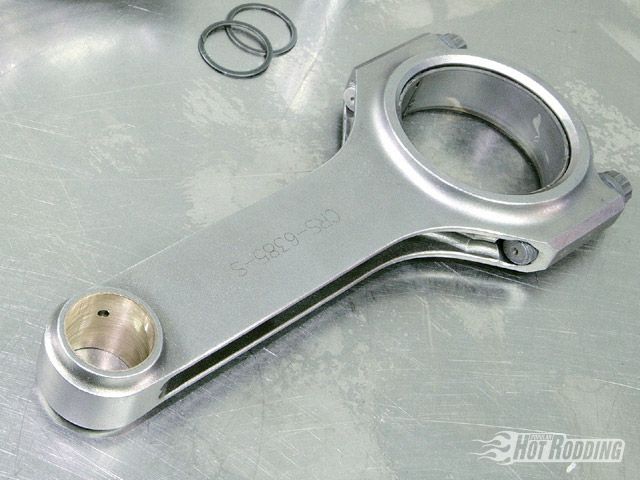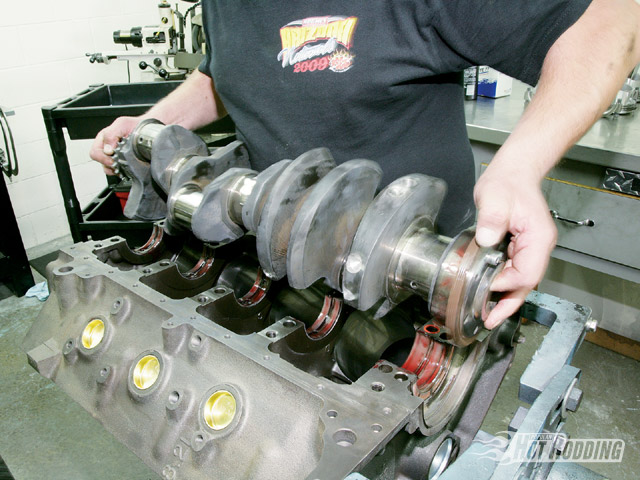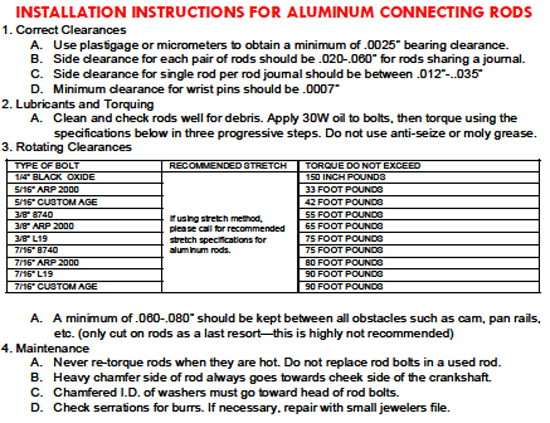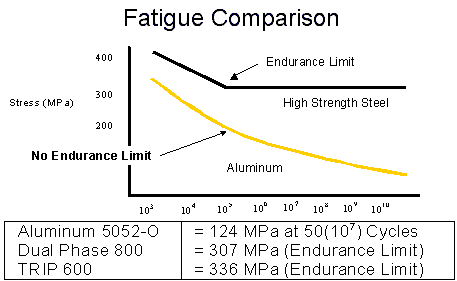I get asked every few months about why I don,t use aluminum connecting rods in my nitrous engine builds like some guys do?
well lets look at it a bit!
why run aluminum connecting rods?
well The answer always given is that it makes the rotating assembly lighter weight so it can accelerate or gain rpms much faster
aluminum's lighter in weight but its not as strong and its got a far lower fatigue strength, or put a different way, a connecting rod made from aluminum must be made significantly larger to have equal strength, to a forged 4340 steel rod, so even though the materials lighter in weight your needing to use more material so theres not as great of a weight savings as you might at first suspect, and a larger rod requires a good deal more clearance work on the block and oil pan used.
youll generally find the aluminum rods REQUIRE use of aftermarket blocks and oil pans in many applications to get the required clearances if your building a 496-572 big block stroker
lets assume we want to build a 496 big block stroker, the 6.385" rods we use differ a great deal
aluminum rod generally should be replaced after 50 -60 hard runs, at the track, because stress is cumulative and aluminum will eventually fatigue and fail, steel rods can generally take 4-6 times that abuse if your running on thee ragged edge of the strength limitations of the steel connecting rods before replacement is a good idea, but if your running a 1500hp rated rod at lets say a 800hp-1000hp level they may last many years in most cases
if you take the time youll find a decent big block stroker crank , weights between 57lbs and 63 lbs in many cases
a light weight damper may weight 7-12 lbs, a flex plate 3-5 lbs a clutch and flywheel easily weight 40-50 lbs, piston and pin lets say 730 grams each or about 13 lbs per set
so lets say the average light stroker rotating assembly weights
http://www.cnc-motorsports.com/product. ... CtgID=7493
http://www.cnc-motorsports.com/product. ... 825&CtgID=
http://www.cnc-motorsports.com/product. ... tgID=33013
http://www.kb-silvolite.com/icon/icon.p ... s&P_id=622





a good 1500hp rated steel rod about 785 grams cost about $500-$800
or about 14 lbs per set with bearings

a semi comparable aluminum nitrous rod 676 grams cost $1100-$1500)
or about 12 lbs per set with bearings
and aluminum rods stretch a good deal more under high rpms, while .044-.048 is generally a good quench distance on a steel rod BBC a aluminum rod will generally require a .080-.087 range due to iit getting longer at high rpms to prevent it contacting the heads
so swapping to aluminum rods reduced the rotating assembly by 2 lbs,
lets see thats
57lbs for the crank
13 lbs for pistons
12 lbs for rods
lets be kind and say 20 lbs for flex-plate, damper pulleys , or close to 100 lbs rotating in the block , you could add 20 more lbs minimum for a flywheel and clutch, so youve reduce the weight 2%-3%, but then remember the only time you can apply power your by definition spinning a total drive train weight and trying to accelerate the total car weight, the weight reduction is all but meaningless in anything over 3000 lbs
example
http://www.summitracing.com/parts/ESP-63853DL19/

READ THRU THE LINKED INFO
http://www.bmeltd.com/pdf_files/rod%20p ... 282%29.pdf
http://www.bmeltd.com/rods.htm
http://www.manleyperformance.com/dl/tec ... uminum.pdf
http://www.manleyperformance.com/pdfs/0 ... 03-134.pdf
well lets look at it a bit!
why run aluminum connecting rods?
well The answer always given is that it makes the rotating assembly lighter weight so it can accelerate or gain rpms much faster
aluminum's lighter in weight but its not as strong and its got a far lower fatigue strength, or put a different way, a connecting rod made from aluminum must be made significantly larger to have equal strength, to a forged 4340 steel rod, so even though the materials lighter in weight your needing to use more material so theres not as great of a weight savings as you might at first suspect, and a larger rod requires a good deal more clearance work on the block and oil pan used.
youll generally find the aluminum rods REQUIRE use of aftermarket blocks and oil pans in many applications to get the required clearances if your building a 496-572 big block stroker
lets assume we want to build a 496 big block stroker, the 6.385" rods we use differ a great deal
aluminum rod generally should be replaced after 50 -60 hard runs, at the track, because stress is cumulative and aluminum will eventually fatigue and fail, steel rods can generally take 4-6 times that abuse if your running on thee ragged edge of the strength limitations of the steel connecting rods before replacement is a good idea, but if your running a 1500hp rated rod at lets say a 800hp-1000hp level they may last many years in most cases
if you take the time youll find a decent big block stroker crank , weights between 57lbs and 63 lbs in many cases
a light weight damper may weight 7-12 lbs, a flex plate 3-5 lbs a clutch and flywheel easily weight 40-50 lbs, piston and pin lets say 730 grams each or about 13 lbs per set
so lets say the average light stroker rotating assembly weights
http://www.cnc-motorsports.com/product. ... CtgID=7493
http://www.cnc-motorsports.com/product. ... 825&CtgID=
http://www.cnc-motorsports.com/product. ... tgID=33013
http://www.kb-silvolite.com/icon/icon.p ... s&P_id=622





a good 1500hp rated steel rod about 785 grams cost about $500-$800
or about 14 lbs per set with bearings

a semi comparable aluminum nitrous rod 676 grams cost $1100-$1500)
or about 12 lbs per set with bearings
and aluminum rods stretch a good deal more under high rpms, while .044-.048 is generally a good quench distance on a steel rod BBC a aluminum rod will generally require a .080-.087 range due to iit getting longer at high rpms to prevent it contacting the heads
so swapping to aluminum rods reduced the rotating assembly by 2 lbs,
lets see thats
57lbs for the crank
13 lbs for pistons
12 lbs for rods
lets be kind and say 20 lbs for flex-plate, damper pulleys , or close to 100 lbs rotating in the block , you could add 20 more lbs minimum for a flywheel and clutch, so youve reduce the weight 2%-3%, but then remember the only time you can apply power your by definition spinning a total drive train weight and trying to accelerate the total car weight, the weight reduction is all but meaningless in anything over 3000 lbs
example
http://www.summitracing.com/parts/ESP-63853DL19/

READ THRU THE LINKED INFO
http://www.bmeltd.com/pdf_files/rod%20p ... 282%29.pdf
http://www.bmeltd.com/rods.htm
http://www.manleyperformance.com/dl/tec ... uminum.pdf
http://www.manleyperformance.com/pdfs/0 ... 03-134.pdf

